|
This glassware is designed for the Georgia Tech campus community and visitors. It uses your location information to help you know what buildings are nearby as well as find the nearest bus stop. This demos how easy it is to leverage our existing APIs and resources in order to support new platforms and development. |
As robots become more commonplace, they will need to address a wide variety of problems. Since a robot cannot be programmed to complete every task, it is necessary for robots to learn new tasks by interacting with a human teacher. Current methods require that the robot receive many demonstrations of a task, or they are limited to completing tasks which are nearly identical to previous demonstrations. We are developing a cognitive system based on case-based analogical learning that may enable a robot to collaborate with a human teacher to transfer task knowledge to a range of target problems. |
Guitar Machine is a guitar loaded with a variety of robotic components. It negotiates between conventional ways of playing music with electromechanical extensions of the fingertips, either driven by software or by a musician directly.  |
Gundam VR is a virtual reality adaptation of the Japanese animated television show Mobile Suit Gundam: Iron-Blooded Orphans. In this virtual reality experience, you will take the role of protagonist Mikazuki Augus, a young soldier that pilots a giant robot, known as a Gundam, in battle as a mercenary. Left paralyzed on his right side due to the physical strain from piloting his Gundam, Mikazuki is only able to control his entire body when plugged into his robot, the Barbatos. 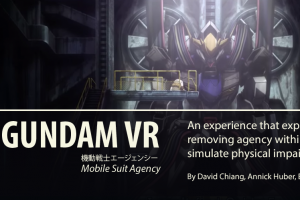 |
|
Tours will be held once every hour (starting at 5 minutes past the hour)! Come see the tools that we use to create one-of-a-kind research prototypes. We have everything from laser cutters and 3D printers to table saws and soldering irons, and we use them to create many of the custom electronics, cases, and wearable prototypes you see in our demos. Stop by the elevator to the basement or ask the folks at the registration desk if you need help finding us! For more information please visit the GVU Prototyping Lab Website  Website: |
Under the background of highly autonomous vehicles (HAVs), machines make most of the driving decisions. Although it spares more time for people to enjoy the trip, it usually leads to passenger anxiety and distrust because of unexplained driving decisions and possible emergencies. There is no suitable office platform in the car. Different road conditions, such as bumps, sharp turns, and sudden brakes, can cause motion sickness for passengers working in the car. In this project, we have explored the limited multimodal interactions to maintain drivers' attention. We propose the haptic interaction  |
“Haptic Mirror Therapy Glove” is an interactive mirror therapy glove for the treatment of a paretic limb following a stroke. It allows the user to stimulate the fingertips of their affected hand by tapping the fingers of their unaffected hand using force sensing resistors to trigger linear resonance actuators on the corresponding fingers. The glove may potentially be useful to stroke survivors and their therapists by encouraging the development of new multi-sensory rehabilitation exercises, which might better help recover lost sensation and strength in their fingers. 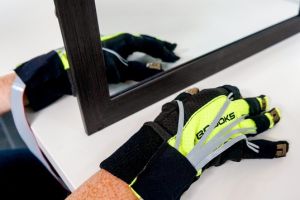 |
An augmented reality mobile application that brings the wizarding world of Harry Potter to the real world for the purpose of answering the following research question: How do the following factors - timers, audio, interacting with virtual objects in the real world, interacting with real objects in the virtual world - increase or decrease a user's motivation to follow an interactive location-based narrative? This project will inform a set of design guidelines for motivating users to follow an interactive location-based narrative. 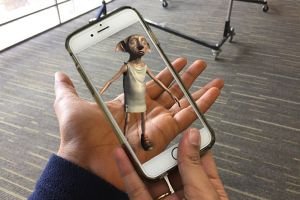 |
|
It is true that social networking has been a powerful force for good; however, these sites have also enabled sharing and connectivity for more nefarious purposes. Specifically, the Internet connects people in ways that can enable and amplify the destructive power of eating disorders (EDs). Some pro-ED communities have emerged that support users' choices of self-harm as a reasonable lifestyle alternative. These communities are not only dangerous for those with EDs but also for potential contagious effects of these communities on those who don't already have these behaviors. |
Tracking Hate Speech and Disinformation in the Upcoming Myanmar 2020 Election 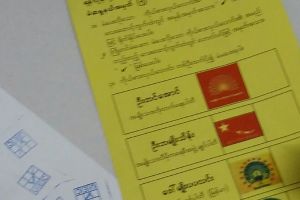 Website: |
We apply our approach to generate training data for a hate speech classification task in the Hindi language and Vietnamese. Our findings show that a model trained using this method outperforms simple language translation for all tasks and performs better than an original curated dataset when tested on a new dataset. This method can be used to bootstrap hate speech detection models from scratch in low-resource language settings. As the growth of social media within these contexts continues to outstrip response efforts, this work furthers our capacities for detection, understanding, and response |
D: circular economy R: online learning and mental wellness |
|
Heads-Up is a Google Glass prototype that functions as a translucent second screen over the television while re-watching a favorite show. Our demo will focus on HBO's highly acclaimed series, Game of Thrones. The intention of the design is to allow the user to continue viewing the TV screen while receiving synchronized commentary through Google Glass rather than be distracted away from the screen by a computer, phone, or tablet. 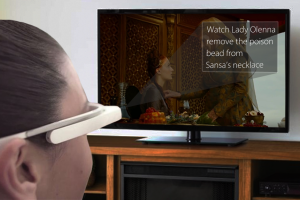 |
This project visualizes health data within the Atlanta metro region. Although some research about health inequities among this region has occurred, it typically is based on county-level data. In order to have a better understanding of health inequities and disparities in our home area, a city profile for Atlanta should be established. This project has created an interactive visualization of data such as rates of teen pregnancies, low birthweight babies, etc. The system allows the viewer to explore correlations among the different variables.  |
Poor quality of medical care is a major contributor to excess medical morbidity and premature mortality in persons with serious mental illnesses (SMI). To address this problem, community mental health providers are increasingly partnering with safety net medical providers to develop behavioral health homes, integrated clinics in which persons with SMI receive coordinated medical and mental health care. However, behavioral health homes have faced logistical and privacy challenges in integrating electronic medical records across organizations. |


